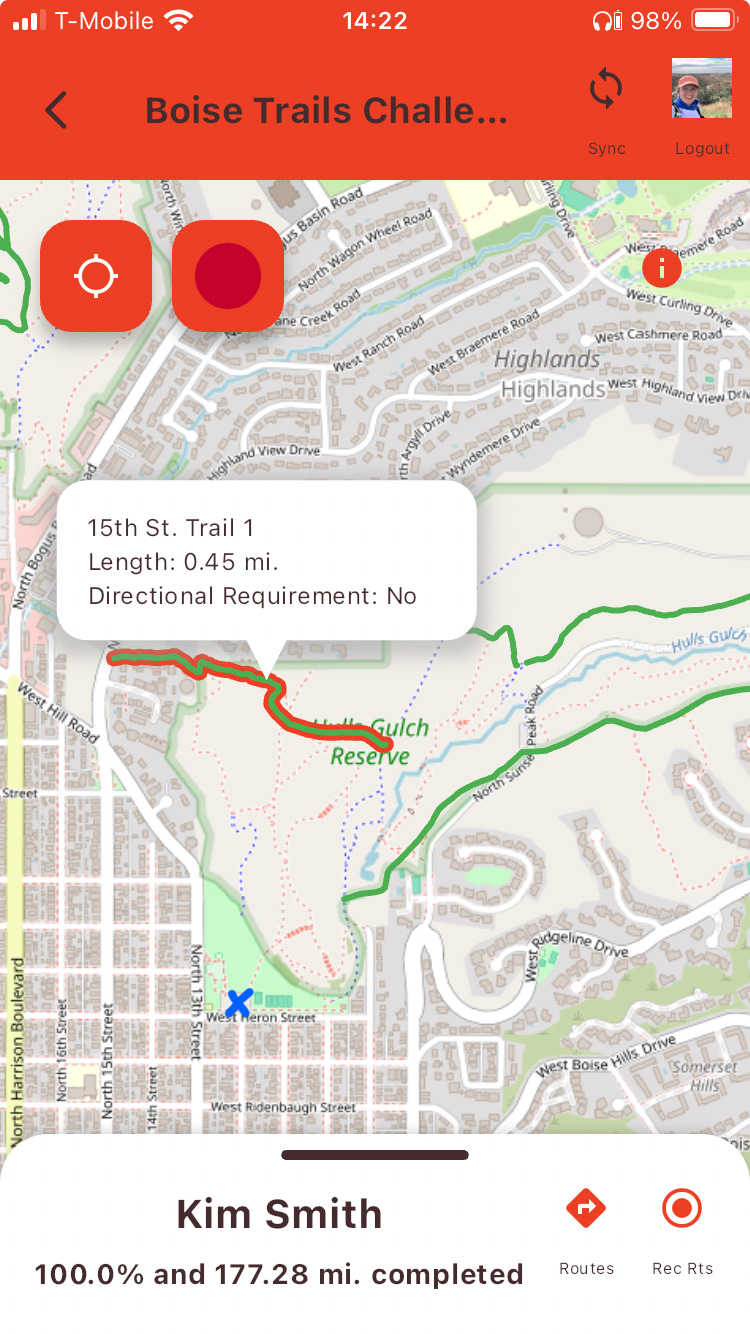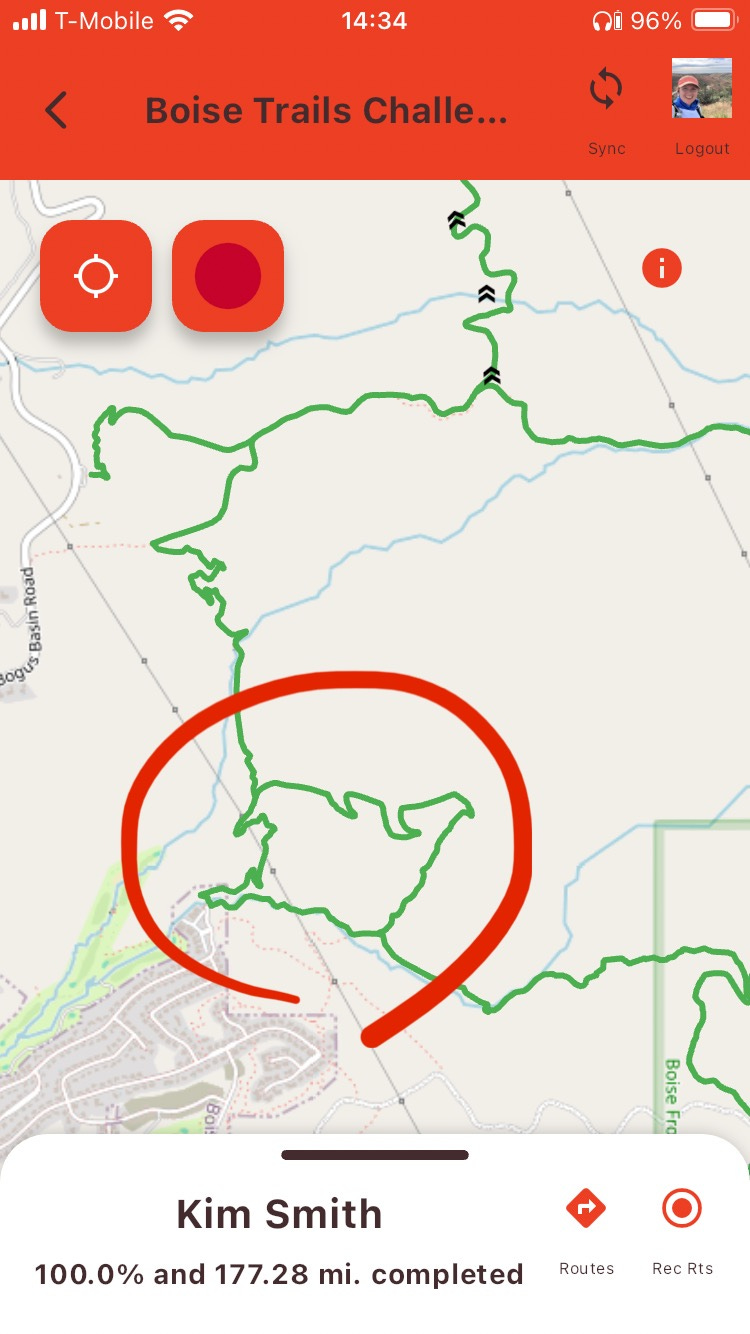I’ve found that when chatting with other BTC finishers about our Boise Trails Challenge experience, that one of the questions that inevitably comes up is “how many total miles did you run?”
Every BTC finisher is listed as having completed 177.3 miles. That’s the official cumulative distance of each required trail on the challenge map.
But no one actually only logs 177.3 miles on their recording device. I use a Garmin watch. Others use Coros or their Apple watch, and some use apps via their phone like Strava. We aren’t expecting these GPS devices to render a perfect match to the BTC map miles; it’s common knowledge in the running world to note differences between runner partners on training runs . . . or when racing to mention how much over or under your watch distance is from the official mileage a race course advertises. (This article explains why these discrepancies are completely normal.)
BTC participants, however, aren’t just comparing GPS watch discrepancies. We’re checking in with fellow runners to see if we are completing the map as *efficiently* as others are.
When you sign up for the Boise Trails Challenge, it becomes pretty obvious pretty early on that you’re not running a pre-mapped route. There are no race markers, timing mats, flagging, or signage that says, “this way.” You start where you want. You complete as many or as few segments as you desire in a session—as long as you’re covering whole segments in each activity, they count. (You can’t cover half of a trail section, stop your watch, then complete the other half on a new recording, for example.) It’s a beautifully open ended adventure in this way, and people have all kinds of different ways of approaching the map.
What’s initially frustrating about this choose-your-own-adventure format, is that your adventure will inevitably include miles that just don’t count toward the challenge.
Some of those miles are because the required trail you’re covering just ends. There may be more trails where it ends, or maybe a service road, but it doesn’t connect to another required trail. In this case, you can either double back on the trail you just finished, or make your way to the next required segment on your list in whatever mode you choose.
Here’s an example. On my day two, Friday, of the challenge, I ran this “section” of trails:
The connecting trails in this case are pretty minimal, but they do add up as non-required miles. (Or as I’ve heard some of the veterans refer to them: “garbage miles.”) I planned this section as efficiently as I could, but no matter how I cut it, I either had to run the 15th Street Trail as an out and back, and then back to the van, OR I could end it at 15th Street, and then make my way back to my van via town, on foot or otherwise.
Here’s a closeup. I was parked at the blue x:
I knew I’d be covering this section just before lunch on Friday, so as I made my way to the 15th Street trail, I noted the time, and called Patrick to see if he had a break in his work schedule to come give me a ride back to the van.
He did!
So when I reached the end of the trail, I found some shade, stopped my watch, took off my vest, and changed out of my long sleeves while I waited for my chariot. He drove me back to the van, then we went and grabbed some lunch at Rush Bowls before he went back to work and I made my way to my next trail conquest.
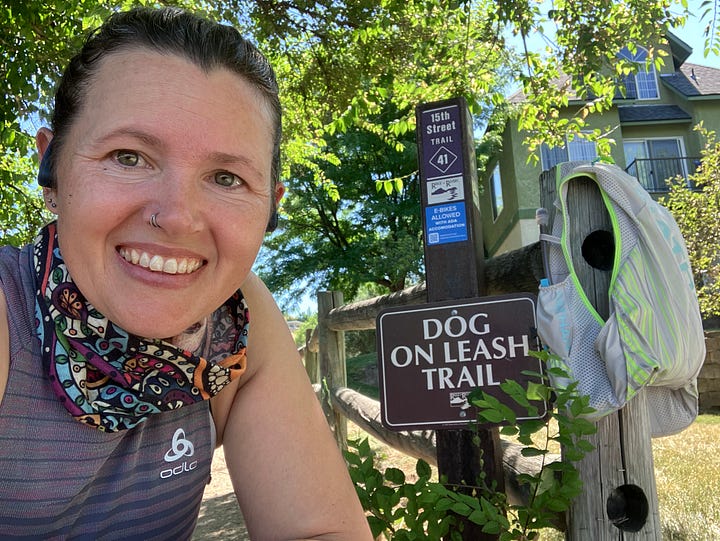
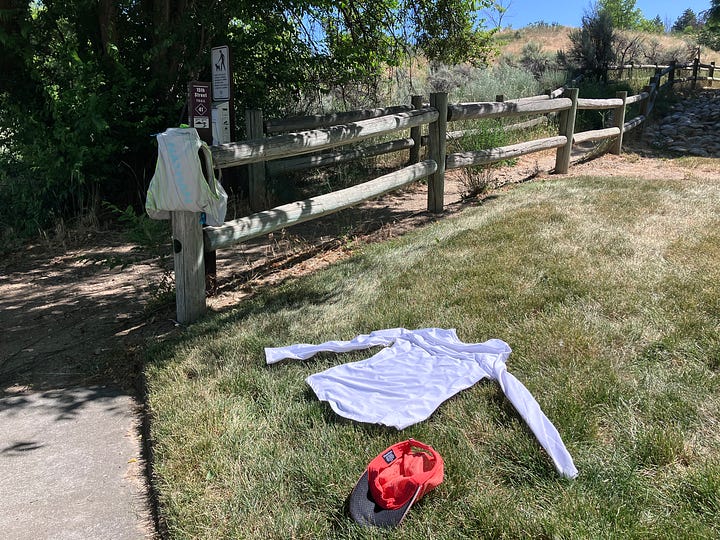
This example is pretty simple. And the on-foot mileage Patrick saved me is pretty minimal. There are other sections on the map where this strategy just will not work.
Like the little southwest corner of the Corrals loop . . .
I just don’t see any other way around it than to double back on either the top half or bottom half of the loop within the loop. This adds at least 1.07 “garbage miles” to the route. And though you could technically get picked up by car at the end of Bob’s Trail where it connects with a neighborhood cul-de-sac, you still have to complete the rest of the trail, so there’s not a whole lot of point in ending right there.
These scenarios are closer to town, and “waste” less mileage than some of the more complicated routes farther out. I did make use of getting shuttled by car whenever it made sense for me to do so, which I’ll cover in another update later on.
What’s important to understand about the BTC is that part of the challenge is in how you approach the map.
My strategy did include utilizing support to minimize miles. I also minimized miles with careful route planning and longer chunks. (If you have to revisit an area of the map several times, you’ll add mileage just accessing your intended trails each time.)
Others actually prioritize completing the map unsupported . . . meaning they make their way back to where they parked after every run or ride.
And others just go with the flow, accepting that “garbage miles” are part of the experience.
In the end, I feel I did make my peace with those un-required miles. It was helpful to remember that every “garbage mile” really was a part of the route getting me closer to a mile I had yet to complete. It’s not like I could sit down at the end of a required segment and magically teleport to the next one, right? It was also helpful to remember that every other BTC participant was likely doubling back on some of the same trails I was re-traveling too.
It’s all a part of the process. And while efficiency may be a sub-goal, the real goal was the complete the Boise Trails Challenge. That challenge requires miles that “don’t count.” So maybe accepting them as part of the challenge is the most productive mindset to embrace when finding yourself doubling back or re-traveling an already traveled trail.
My fifteen year old got her driver’s permit on the same day that I completed the BTC. She was the one who drove us to most of my birthday celebrations that week, which was in and of itself, well—celebratory, actually.
While she officially had her permit, and was legally driving, we hadn’t yet downloaded the app that student drivers use to track their practice hours during this six month, pre-license window. Patrick and I didn’t think it was a big deal. Once we download it, we’ll add the driving we’ve already done with her to the log, right?
Wrong.
On Sunday morning, Patrick told her that she needed to get the app before she could continue driving. The idea was that we could keep current with the logs and not put off this important step. Upon adding the app to her phone we discovered that it’s not just a spreadsheet tool. It’s a recording tool. We have to open it and press “start” during each practice drive.
So, we had wasted a week of practice driving by not recording those drives.
Which is a little frustrating when you’re thinking of each logged hour as one hour closer to the requirement of 50 hours.
At least we only missed out on a week’s worth!
Then today she drove herself to a friend’s house using the app. I drove home, worked on this post, then drove back several hours later to pick her up. As I switched to the passenger side and she slipped into the driver’s seat, she informed me that if you forget to “end the drive” before you close the app that it also “doesn’t count.” Clearly, she learned this from experience.
At first, I was frustrated. What’s the point of all this driving practice if it doesn’t count?! But she reminded me that it’s great that we discovered this so early in the process so that we don’t repeat the mistake. She’s right.
And, as I reflected further on this valuable learning experience, I came face to face with the fact that the point of the driving practice isn’t to get to 50 hours as efficiently as possible. It’s to give our daughter plenty of supervised driving practice before she gets her license!
Ah.
It all counts.
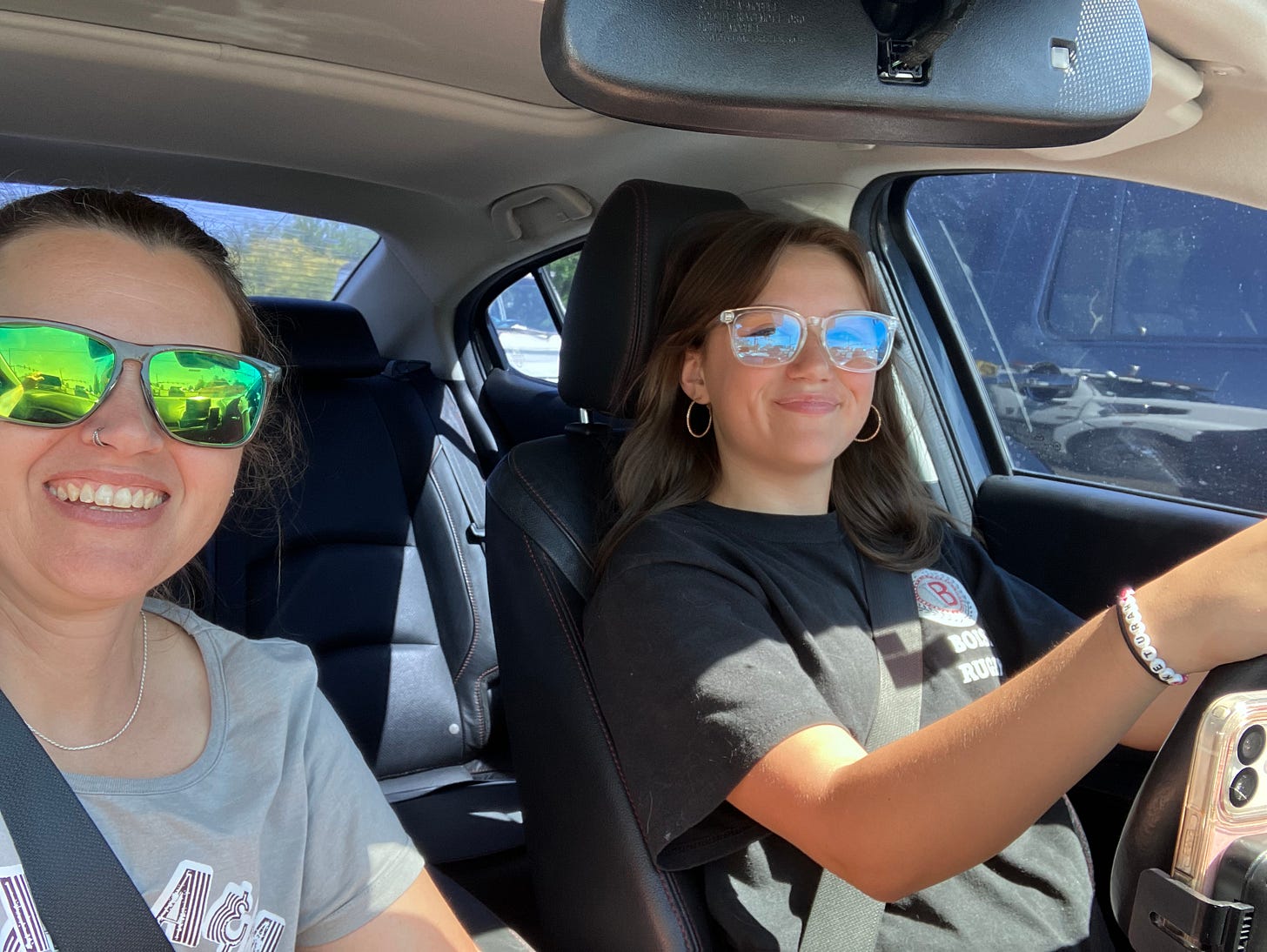
Honestly, by the time I finished the BTC, I felt really good about all 222.8 miles. I did compare my Garmin miles to other finisher GPS miles, and know that I wasn’t the *most* efficient finisher out there. (The first place on-foot finisher did it in 216 miles!) But I also know that some people log close to 250 miles before they’ve completed their BTC map.
I like knowing that I planned well, played it smart, used my resources wisely, and that what I learned through experience this year can benefit myself and others in years to come.
At the end of the day, it all counts.





